COSHH Risk Assessments and Data Sheets – What You Need to Know
This post is part of the “Focus on Health and Safety Audit Questions” series. A series which focuses on questions asked by our health and safety consultants when conducting a health and safety audit.
Tests
i. Check that COSHH risk assessments have been carried out & kept under review. Auditor to check chemicals being used by department e.g. Housekeeping/maintenance.
ii. Check that COSHH safety data sheets are available, and there is an inventory of chemicals used.
Reason for These Questions
Control of Substances Hazardous to Health (COSHH) is the law that requires employers to control substances that are hazardous to health.
Possible Answers
Red: No documentation
Amber: Some documentation available / documentation Out of Date
Green: Documentation available and up to date
Common Issues
- No COSHH risk assessment and data safety sheets found
- COSHH risk assessment and data safety sheets missing
- COSHH data safety sheets out of date
- Reliance on contractors for COSHH documentation with no information available
- Lack of documented roles and responsibilities in regards to COSHH
Fail Rate
40% of businesses failed this question based on our sample data.
Table of Content
- Information
- Chemicals
- Blood Borne Infections
- Dermatitis
- How to Complete COSHH Risk Assessments
- Our Solutions
Information
What is a hazardous substance?
A hazardous substance is anything that could cause harm to a person by having an effect on their health.
How can substances cause harm?
Substances gain entry into the body through:
- breathing it in,
- swallowing it,
- through injection, or
- through it being absorbed directly through the skin.
The harm could be instant,
A strong acid causing a chemical burn as soon as it is spilt onto skin,
Or it could be delayed,
By a person developing breathing problems many years after first starting to breathe in a chemical fume at work.
It can include any of the following:
- Chemicals labelled as hazardous; e.g. corrosive, irritant, harmful, toxic or very toxic.
- Dusts, gases and fumes.
- Micro-organisms that can cause harmful infections such as bacteria and viruses.
By a person developing breathing problems many years after first starting to breathe in a chemical fume at work.
Substances are usually in the workplace because they are needed, e.g. a chemical cleaner. They could also be brought in by contractors.
Where some harmful infections might be brought into the location by consumers, by discarding injection needles.
Chemicals and hazardous substances policy
It is the organisation’s intention to reduce the amounts of hazardous chemicals used so far as is reasonably practicable and replace with non-hazardous products when available.
The company will decide on what supplier will be used and what chemicals will be provided to locations.
The chemicals in use and the review of any new products will be reviewed and purchased as required i.e. new piece of equipment or change of process. This list will also be reviewed if there is a change of supplier.
Each location is issued with a folder from the supplier containing the manufacturer’s safety data sheets (MSDS) and a list of what chemicals are provided.
Chemicals
What harm can they do?
The easiest way of finding out if a substance could be harmful is by labels, warning notices, safety instructions and data sheets placed on chemicals or supplied with them.
What can we do?
Where authorised chemicals are used in the location the following guidelines shall apply at all times:
Chemicals must only be:
- Used by team members who have been trained in their correct use,
- Used with the appropriate personal protective equipment (PPE),
- Used in accordance with the manufacturer’s instructions,
- Stored in a designated storage cupboard, which must be kept neat and tidy,
- Kept in their original container, clearly labelled and the containers must be free from leaks, damage and must have the tops securely replaced after use,
- Kept in a flame retardant metal cabinet (If labelled with the flammable sign),
- Stored well away from smoke detectors and sprinkler heads,
- Stored safety in a locked storeroom if there is any risk that a consumer or child may be able to access the chemicals.
Chemicals must never be:
- Stored above head height,
- Stored close to any heat or ignition source,
- Mixed with any other chemicals,
- Disposed of without following the manufacturer’s instructions.
- Decanted into an unlabelled container
Use chemicals safely
To use a chemical safely there is a need to carry out a risk assessment of the chemical. A safety data sheet [SDS] for each product will be required from the manufacturer to support the assessment.
The safety data sheets contain information about the possible hazards presented by the chemical, what controls to follow when using it and first aid treatment if this is required.
A copy of the data sheets for all the chemicals used must be held in the health and safety records file.
Data sheets cannot be used as assessments because they do not detail how the chemical is used in your location.
A risk assessment must be carried out to identify safe practices for use in your location
No chemical should be used unless it has been approved for use by organisation and supplied from an authorised contractor.
Where chemicals are identified as necessary for use by organisation, safety data sheets will be provided and a risk assessment must be completed.
Chemical risk assessments
The safety data sheets supplied with the chemical should be used to help complete an assessment form showing how they will be used and controlled in your location.
The assessment form should be filled in with the following information:
Substance
Enter the name of the product.
Use and location
Detail what the product will be used for. It is acceptable to record a broad type of use, e.g. “equipment cleaning”.
Where in the location will the product be used? This can be general, e.g. “all floors” but are specific if chemical is only used in one area. Do not use specific chemicals in new areas without updating the assessment.
Detail of hazard
Which part of the body is the chemical hazardous to, e.g. eyes, skin, lungs, etc.? This should take into account the way in which the chemical is used and stored.
Controls
No chemical should be used unless there are clear controls in place over possible hazards.
If possible a chemical which is less harmful should be used. Advice should be taken from suppliers on whether alternative chemicals are available.
If the chemical cannot be replaced controls should be used which will prevent as much direct personal contact with it as possible. For example, this might involve using the chemical in such a way that team members do not need to handle it directly, or using it in areas where team members will not breathe it in.
Matching controls to team members who may be at higher risk
Some team members may be more likely to suffer harmful reactions to chemicals than others. The risk assessment should have identified how the chemical can affect employees, e.g. as a skin irritant, and the duty manager must then try to identify if any team members are more likely to be affected by this.
The best way of doing this is to ask, before team members use the chemical, whether they have had any problems like this in the past. For example, some team members may have suffered skin irritation when using cleaning chemicals in their home.
If possible, team members who may be at higher risk should not come into contact with chemicals. This may be possible through use of personal protective equipment (PPE) or it may mean not using them for a particular job. All team members should be told to report any adverse reactions to use of chemicals to the duty manager. For team members with any history of adverse reactions in the past, duty managers must offer closer supervision and check that they are not suffering any adverse reaction.
Restrictions on team members use
All team members must be given training before being allowed to use any chemicals but use of some chemicals may be restricted to certain individuals.
Personal protective equipment required
Record details of any personal protective equipment (PPE) that should be worn when handling the chemical.
Any PPE that is used must be maintained in good condition and replaced if it becomes damaged. Team members must be trained when to use PPE and how to fit it correctly if it is not clear how to do this.
Emergency action
Record what to do if an accident involving the chemical occurs. This should include first aid information and any specific information on firefighting or controlling spillage. This information should be given in the safety/hazard data sheets.
Date
Record the date that the assessment was completed.
Team members training
Team members must not be allowed to use hazardous substances without being given training. This will be recorded on training records on induction and annual refresher training
Training will include:
- What the possible hazards of the substance are,
- How the substance might affect the person using it,
- The importance of reporting any possible adverse reaction to the substance and what these might be,
- The importance of reporting any existing health conditions that might be affected by chemical use, e.g. skin complaints,
- What to use the substance for,
- Where the substance can be used,
- Storage procedures,
- How to use any personal protective equipment (PPE) required,
- What to do in an emergency.
Blood Borne Infections
What are blood-borne infections?
A blood-borne disease is one that can be spread by contamination by blood. The most common examples are HIV, hepatitis B, hepatitis C and viral hemorrhagic fevers.
What are body fluid infections?
Body fluids are potentially infectious fluids putting team members at risk of infection. Precautions are required for all body fluids and as such, they should be treated as infectious. Safety measures are required to be taken whenever there is potential contact between team members and non-intact skin (e.g. cuts & wounds), mucous membranes, blood or other body fluids.
What harm can they do?
The risk of becoming infected with a blood-borne or body fluid infection in the workplace is extremely low.
Infections like this are not passed on through normal work or social contact such as coughing, sharing plates/cups, shaking hands, etc.
There may be some situations where contact with blood might occur,
Treating someone who has cut themselves.
In these cases the controls below must be followed that will prevent any possible infection.
What can we do?
First Aid
If giving first aid to anyone who is bleeding, make sure that any cuts on your own hands are covered by waterproof dressings. Wear waterproof gloves that cover your hands up to the wrist. After treating the person throw the gloves away and thoroughly wash your own hands.
Cleaning
Cleaning might be required after a person has cut themselves and dropped blood onto a surface, cleaning up broken glass that might be contaminated with blood, or general cleaning in areas where sharp items contaminated with blood, e.g. injection needles, might have been left. The following controls will be followed:
- Wear waterproof gloves when cleaning any blood spillage.
- Use paper towels to mop up any large spill. Place these in a strong plastic bag.
- Wash the area with a disinfectant cleaner.
- Dispose of cleaning cloths and gloves into the plastic bag and then wash hands thoroughly.
- Do not handle broken glass with bare hands. Use equipment such as pans and brushes and/or wear heavy-duty gloves.
- Never try to clear out bins by sweeping around them with bare hands.
- Do not put your bare hands into any place where injection needles may have been discarded, e.g. in waste bins in public areas, at the side of seats in public areas, behind pipe work or fittings in toilets.
- If a needle is found, only handle it wearing thick rubber gloves. Dispose of it into a “sharps box” or other puncture proof rigid container.
- Report all findings of injection needles to the Duty manager.
Personal first aid if a needle enters the skin
- Encourage the injury to bleed to flush out any material that might be on the needle. Do this by putting the area under running water and pushing towards the wound. Wash hands, dry, and then put on a dry wound dressing.
- Inform the duty manager.
- Seek professional medical advice as soon as possible taking the needle with you.
Dermatitis
What is dermatitis?
Dermatitis is a skin condition caused by contact with something that irritates the skin or causes an allergic reaction. It usually occurs where the irritant touches the skin, but not always.
What does the law require?
The law requires employers to adequately control exposure to materials in the workplace that cause ill health like dermatitis. Employers and employees need to comply with the Control of Substances Hazardous to Health Regulations 2002 (as amended) (CoSHH). They require employers to assess risks, provide adequate control measures, ensure the use and maintenance of these; provide information, instruction and training; and in appropriate cases, health surveillance.
What does it look like?
If you look at pictures of skin that has dermatitis, you could see one or all of these signs:
- Redness
- Scaling/flaking
- Blistering
- Weeping
- Cracking
- Swelling
What does it feel like?
Someone who has dermatitis may experience symptoms of itching and pain. The signs and symptoms of this condition can be so bad that the sufferer is unable to carry on at work.
What cause irritant contact dermatitis?
It can occur quickly after contact with a strong irritant, or over a longer period from repeated contact with weaker irritants. Irritants can be chemical, biological, mechanical or physical. Repeated and prolonged contact with water (e.g. more than 20 hand washes or having wet hands for more than 2 hours per shift) can also cause irritant dermatitis.
Irritant contact dermatitis:
- Wet work
- Solvents
- Some food (e.g. onions)
- Oils and greases
- Dusts
- Acids and alkalis
What causes allergic contact dermatitis?
This can occur when the sufferer develops an allergy to a substance. Once someone is ‘sensitised’, it is likely to be permanent and any skin contact with that substance will cause allergic contact dermatitis. Often skin sensitisers are also irritants.
Allergic contact dermatitis:
- Adhesives
- Some food e.g. shell fish & flour
What can we do?
Following three simple steps can prevent dermatitis:
- Avoid contact with materials that cause dermatitis.
- Protect the skin.
- Check for early signs of dermatitis
How you can avoid contact are:
- substitute a more hazardous material with a safer alternative;
- use mechanical handling;
- use equipment for handling;
- don’t use the hands as tools;
How to protect the skin by the following:
- tell team members how to look after their skin;
- remind them to wash any contamination from their skin promptly;
- tell them about the importance of thorough drying after washing;
- provide soft cotton or paper towels;
- supply moisturising pre-work and after-work creams;
- provide appropriate protective clothing/gloves;
- make sure gloves are made of suitable material;
- select gloves that are the right size and right for the task to be done;
- use and store gloves correctly;
- replace gloves when necessary.
Regular skin checks are carried out to look for early signs of dermatitis.
- Regular skin checks can spot the early stages of dermatitis.
- Early detection can prevent more serious dermatitis from developing.
- Steps can be taken to start treating the condition.
- Checks can help indicate a possible lapse in your preventative measures and
- the need to reassess the situation.
Remember AVOID, PROTECT, CHECK
How to Complete COSHH Risk Assessments
This how to guide is intended to provide and allow you to carry out CoSHH assessments on the majority of substances in everyday use, however, to complete this assessment correctly, you must ensure that you obtain the necessary safety data sheets for the substance you are assessing, you must also determine the level of exposure to your employees in your particular circumstance and take steps to eliminate or reduce so far as is reasonably practicable, exposure to these hazardous substances.
If you have any doubts queries or concerns, you should refer to the relevant regulations and take speak to your supplier.
Some substances are extremely hazardous and can cause dangerous diseases such as asthma and cancer; other substances can cause birth defects in fetuses. For these substances we recommend you seek specialist advice.
The purpose of the risk assessment is to enable the employer to make a valid decision about the control measures necessary to prevent or adequately control the exposure of their employees to substances hazardous to health.
The assessment should determine whether there are any substances hazardous to health (including Biological agents) at the workplace to which employees are liable to be exposed and in a form that can be ingested, inhaled, or absorbed through the skin.
Instructions for use;
Name of substance – Please enter the trade or descriptive name of the substance you are assessing.
CoSHH reference – Enter your reference number here, each assessment should have its own unique identifying number.
Date of assessment – Enter the date you carried out the assessment.
Review date – Enter the date you want to review the assessment, CoSHH assessments should be reviewed on a regular basis either annually or sooner if the task is particularly risky or whenever something in the process changes either method of work, substance or personnel.
Supplied by – Enter the name, address and contact details such as phone/fax number of the organisation who supplied the substance.
Persons at risk – Enter names of individuals or groups of people who might be affected by the substance i.e. staff, workers, visitors etc. It is not necessary to write down every individual’s name in a given group. Take special care where young persons or pregnant women are exposed.
Assessor and duty manager – Enter the name of the person carrying out the assessment and any superior who you might want it authorised by.
Location – Enter details of the location within your premise where the task is carried out.
Description of substance – Enter brief details about the substance and what it is used for.
Method of use – Enter a description of the method of use of the substance.
PPE required – tick the boxes of any PPE (personal protective equipment) that should be worn by team members and is required for the safe use of the substance.
Routes of entry – Tick the box of any entry routes the substance uses to enter the body either; inhalation when the substance can be breathed in; absorption where a substance can be absorbed through the skin or ingestion where a substance can enter the body through the mouth and into the stomach and intestines. Location – Write down the location of your premises where the activity takes place.
Risk phrases/safety phrases – Write down the risk/safety phrases and a brief explanation of what they mean.
OES, MEL, STEL, WEL – Many hazardous substances have been assigned “exposure limits” that is limits on the concentration of airborne particles that are allowed to be present in the workplace, these limits are referred to as Occupational Exposure Standards, Maximum Exposure Limits and Short Term Exposure Limits. A full list of OES and MELs is published in the HSE document EH40 that is reviewed annually, exposure limits are also found on some MSDS sheets. The WEL or Workplace Exposure Limit are a new set of values that are being introduced by the HSE and will be phased in over time.
Frequency and duration of exposure – Calculate the number of times and the length of time employees are exposed to the substance, this is important for working out the risk of a substance harming someone. You must then refer to the MSDS or other sources such as EH40 for details on maximum exposure limits and ensure these limits are not exceeded.
Substance properties – Please tick all that apply to the substance you are assessing.
Control measures – Write down all the control measures currently in use, remember to make a note of any control measures which you feel may not be working to the desired level.
First aid measures – write down the first aid measures required, this information can usually be taken from the MSDS.
Further action required – If even with existing control measures in place you think there may be significant risk of injury or ill health caused to the employee, you MUST put in place further control procedures to prevent the injury or ill health from happening.
Responsibility, by when, date done – If any further control procedures are required enter the name of the person responsible for ensuring this is done, the date it should be done by and the date it was actually done.
Spillage procedure/fire prevention – Write down the emergency procedures you have for dealing with an uncontrolled release of the substance and any fire prevention measures you have defined.
Handling/storage & disposal considerations – Enter brief details of handling, storage and disposal requirements (details from the MSDS sheets).
Risk assessment comments – Enter any further relevant comments.
Assessor summary page – Fill in the assessor summery page, this page will ask you a few questions and is intended to get you to think about the assessment you have just done, take this opportunity to revisit the separate sections and ensure you have done everything reasonable to prevent ill health.
Our Solutions
The COSHH section in our health and safety manual will define responsibilities within your business, required risk assessments, documented procedures and all required forms. Health and safety manuals are available as part of our Health and Safety Management System packages.
This post is part of the “Focus on Health and Safety Audit Questions” series. A series which focuses on questions asked by our health and safety consultants when conducting a health and safety audit.

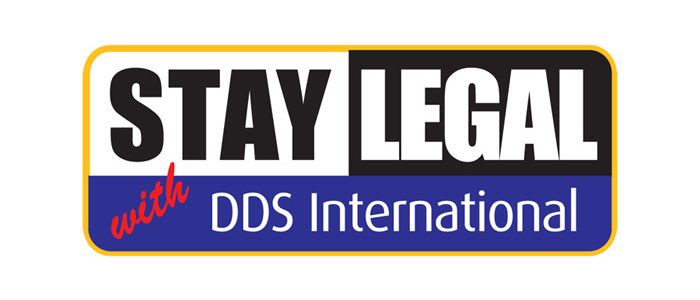
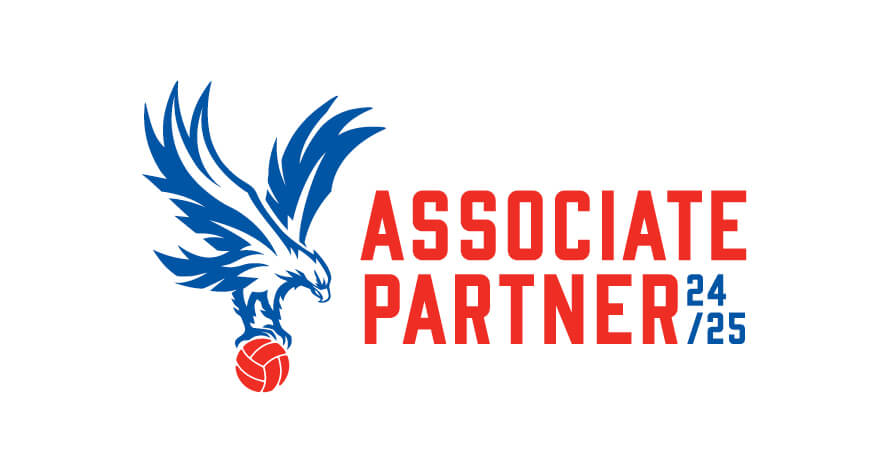
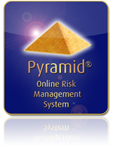


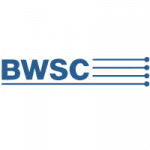
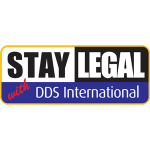



Comments are closed.